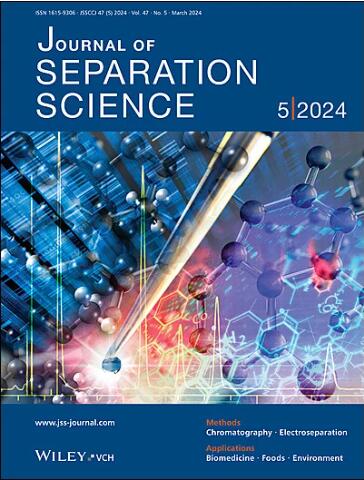Simultaneous Determination of Vancomycin and Creatinine by Dried Plasma Spotsampling via LC-MS/MS
Abstract
Routine monitoring of vancomycin drug concentrations is crucial for optimizing dosages to ensure therapeutic efficacy and minimize adverse effects. Vancomycin's clearance is highly correlated with creatinine clearance. However, in developing countries, the majority of hospitals lack the on-site capacity to measure vancomycin concentrations. Dried plasma spots have emerged as an innovative alternative for biological sample collection. Dried plasma spots facilitate the convenient and rapid acquisition of plasma samples, which are highly suitable for both storage and transportation, and can be dispatched to vancomycin testing laboratories. This study presents a validated methodology for the simultaneous quantification of vancomycin and creatinine in dried plasma spots through liquid chromatography-tandem mass spectrometry. Vancomycin demonstrated excellent linearity within the range 3–50 µg/mL, while creatinine exhibited linearity from 1 to 70 µg/mL (both with r2 > 0.995). The trueness of all compounds was maintained within ± 15%, the precision was less than 15%, and the recoveries were within acceptable boundaries. Moreover, no significant matrix effects were detected. By employing the Passing–Bablok and Bland–Altman methods, we compared the differences and consistencies between the wet plasma concentrations and dried plasma spot concentrations of vancomycin and creatinine in 71 samples. The results revealed no significant distinctions between the two approaches and showcased comparable consistencies, implying that the dried plasma spots technique can be effectively utilized for the simultaneous determination of vancomycin and creatinine in plasma.


 求助内容:
求助内容: 应助结果提醒方式:
应助结果提醒方式:


